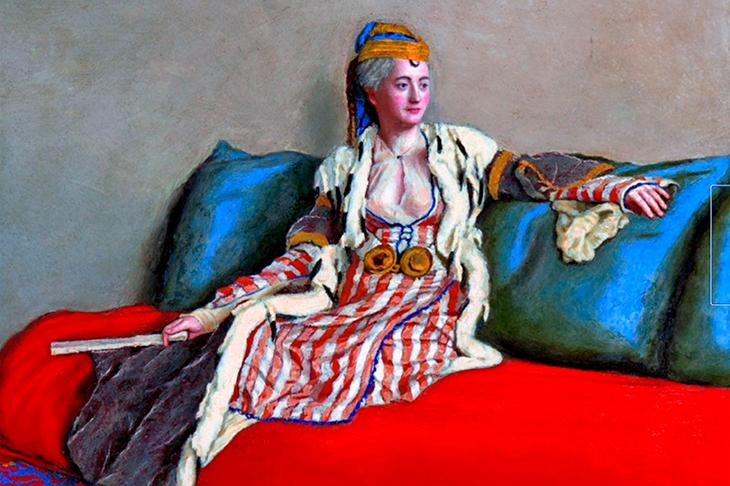This timely book celebrates one of the most remarkable women of the 18th century. Lady Mary Wortley Montagu was so impressed by the Turkish technique of ‘engraftment’ to prevent smallpox that in 1721, exactly 300 years ago, she arranged for the first such inoculation in England — and, even more controversially, had it carried out on her own three-year-old daughter. Smallpox pus from a sufferer was carried in a walnut shell and applied to a cut made in her daughter’s arm.
She discovered the technique too late to use it on herself. As a young woman and court beauty, she had contracted smallpox during one of the frequent epidemics that swept London, leaving her scarred and without any eyebrows. This gave her what contemporaries described as ‘the Wortley stare’, a penetrating gaze which, allied with her fierce intelligence, made her a formidable proposition.
Together with Princess Caroline, the wife of the future George II, she embarked on a campaign to persuade a deeply reluctant British public that the process was safe. Caroline inoculated her own royal children and, in a brilliant publicity stunt, the two women campaigned successfully for six prisoners in Newgate to be given their freedom if they allowed themselves to be similarly immunised. The press loved it: a dream story which managed to combine the royal family, crime and the controversial treatment of a disease.
Mary embarked on a campaign to persuade the reluctant British public that smallpox inoculation was safe
But clerics still thundered from the pulpit that Mary was immoral. One declared that smallpox was a judgment on human sin, and should be tolerated rather than prevented by such heathen and counter-intuitive methods.
Mary had learned of the technique when her husband was ambassador to Constantinople. She left some remarkable accounts of life in the Muslim world. On visiting a hammam, she was struck by the relaxed freedom of the 200 or so naked women patrolling around.







Comments
Join the debate for just £1 a month
Be part of the conversation with other Spectator readers by getting your first three months for £3.
UNLOCK ACCESS Just £1 a monthAlready a subscriber? Log in